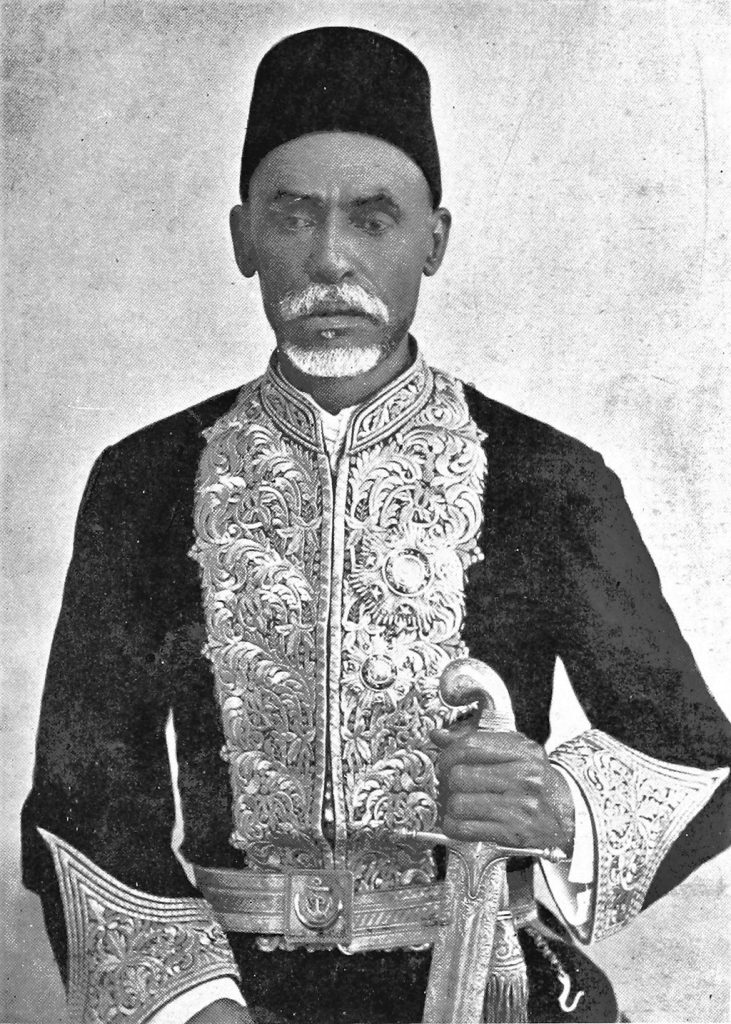Explore Thakar Singh Atartvala's role in Maharaja Ranjit Singh's expeditions. Legacy and history in Punjab's military history of the 1800s.
Explore Zobeir Rahama's pivotal role in Maharaja Duleep Singh's restoration campaign and his impact on international affairs despite his decline.
AKHBAR LUDHIANA, a weekly newspaper in Persian sponsored by the British North-West Frontier Agency at Ludhiana in November 1834. The paper, a four page sheet initially, but doubling its size within two years, started printing at the American Missionary Press, Ludhiana, shifting to the Pashauri Mall Press, Ludhiana, in June 1841. Three years later it ceased publication. It had a small circulation mainly determined by the requirements of the East India Company\'s government. The name of the editor or subscription rates were nowhere mentioned. The Akhbar carried news furnished by English news printers from various parts of the Punjab.
Explore Atar Singh Kalianvala's pivotal role as an influential soldier and chief during Sikh times. Discover his legacy in Punjab's rich history.
BHUPINDER SINGH, LIEUTENANTGENERAL MAHARAJA SIR (1891-1931), Knight Grand Commander of the Order of the Star of India, Knight Grand Commander of the Order of the Indian Empire, Knight of the Order of the British Empire, ruler of the Sikh state of Patiala, was one of the most colourful and influential Indian princes of the interwar years. Tall, robust, dashingly handsome, he was to the British the personification of the Punjabi martial races, a veritable "flower of Oriental aristocracy." In his own eyes, and in the eyes of many of his coreligionists, he was the temporal leader of Sikhism.
CHARHAT SINGH, son of Jai Singh, a Sandhu Jatt of Kot Sayyid Mahmud, a small village near Amritsar, held a service jagir under Maharaja Ranjit Singh. His father had served as a trooper under Gulab Singh Bhangi. Charhat Singh`s sister Rup Kaur married Maharaja Ranjit Singh in 1809. Charhat Singh and his brother Bhup Singh were assigned an area worth 30,000 rupees, subject to the service of 200 horse, which they held for 15 years when it was resumed.
DEVNO DEVl, RANI (d. 1839), daughter of a Chib Khatri of Dev Batala, in Jammu, was married to Maharaja Ranjit Singh. She immolated herself on the burning pyre of her husband on 28 June 1839.
FERINGHEE is an adaptation of the Indo Persian term frangi or firingi used to denote a person of European origin. It is dervied from Frank, "a member of a group of ancient Germanic peoples dwelling in the regions of the Rhine, one division of whom, the Salians, conquered Gaul [modern France so named after them] about AD 500." Turks were the first Asian people to come in contact with Franks whom they called frangi, a name applied to all Europeans. Europeans who came to India following the arrival in 1498 at Calicut of Vasco de Gama, a Portuguese explorer, were also called Feringhees.
Discover the life of Gulab Kaur, married to Maharaja Ranjit Singh in Amritsar. Explore her story and legacy until her death in 1838.
Discover Hira Singh Kalal's intriguing role as an intermediary between Indian royalty and Maharaja Duleep Singh during the 1880s. A tale of historic travels and diplomacy.





